Keeping you informed
Newsletter January 2023
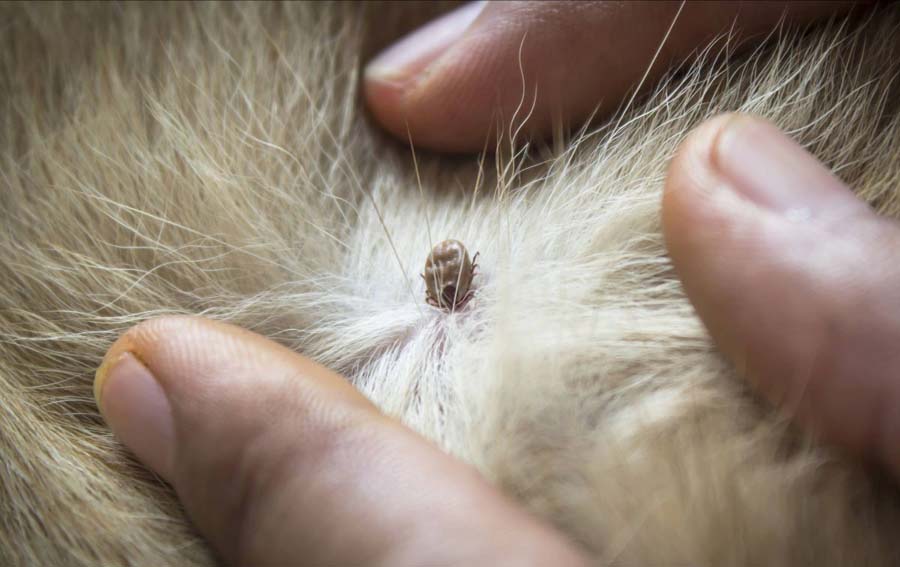
Happy Lunar New Year for 2023!
2023 is the Lunar New Year of the Rabbit! The rabbit is a symbol of intellect and cautiousness, with Albert Einstein, Frank Sinatra and Lionel Messi all being born in the Year of the Rabbit. The rabbit is thought to be the luckiest out of all twelve animals in the zodiac, and the Year of the Rabbit is said to bring peace and prosperity.

Is your pet protected from deadly paralysis ticks?
Australian paralysis ticks are far more toxic than ticks in the UK, South Africa or the United States. It is vital that dogs and cats are treated with appropriate preventatives to safeguard them from paralysis ticks. Remember, when it comes to parasites, prevention is the best medicine!
Knowing the early signs of tick toxicity could save your pet’s life!
Signs of tick toxicity can be any of the following:
- Vomiting or retching (mainly dogs)
- Change in the sound of your dog’s bark or your cat’s meow (vocal chord paralysis)
- Incoordinated back legs or wobbly gait progressing to paralysis of all limbs
- Difficulty breathing progressing to respiratory failure and death
Signs of tick toxicity usually occur within 3 days of tick attachment. One tick can kill a pet.
If you find a tick on your pet, or notice any of the above signs, contact our friendly Customer Care Team to organise a veterinary consultation as soon as possible.
If you’re not sure what preventatives to use, read Dr Gretta Howard’s article below on ‘What is the safest parasite control for my dog?’ for more information on which specific products we recommend.
Heat wave warning!

February is the hottest month of the year and it is vital that, as pet owners, we understand which temperatures are too hot for our beloved furry and feathered friends. Pets, like people, can develop life-threatening heat stress. Heat stress can cause signs of dehydration, a rapid heart rate, lethargy, vomiting, and in severe cases, death.
To avoid heat stress in your pet:
- Always provide water, shade, and respite from the heat, such as time indoors, in front of a fan or in an air-conditioned room.
- Never leave your pet in the car unattended.
- Do not exercise your pet during the hottest times of the day. Instead walk them in the morning or evening when the temperature is less extreme.
If you cannot touch the pavement as it is too hot, then it is also too hot for your dog’s paws!
Is your pet itchy? It could be allergies!
Summertime is the season where vets see a spike in skin allergy cases that are exacerbated by the influx of warmer, more humid weather.
Environmental allergens, which causes a condition called atopy, are the most common cause.
Clinical signs of atopic dermatitis include:
- Itchy skin
- Foot licking
- Ear infections (often preceded by head shaking)
- Skin rashes
- Scooting
If you have noticed any of these clinical signs in your pet, call our Customer Care Team to book in for a veterinary consultation.
Going away in the holidays? Get a pet sitter!
As travel becomes more frequent with restrictions lifted, we are seeing a high number of our clients going on well-earned breaks! As a result, our patients are also going on their own holidays to boarding kennels and catteries, or being looked after by trusted pet sitters, friends or family.
It is our recommendation that pets are not left unattended while on holidays. Utilise a house sitter or a boarding facility instead of having someone just come to your house to feed your pet once or twice a day. Unless someone is physically living at the house, if a pet emergency occurs such as tick toxicity or an obstruction, the subtle early changes may not be noticed, whereas if you have a pet sitter, help will be on hand promptly to make sure medical attention can be sought.
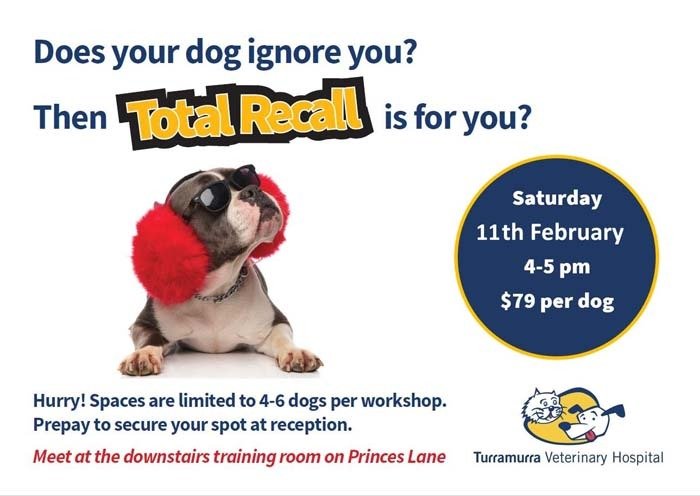
Pet Of The Month: Ash Hwang
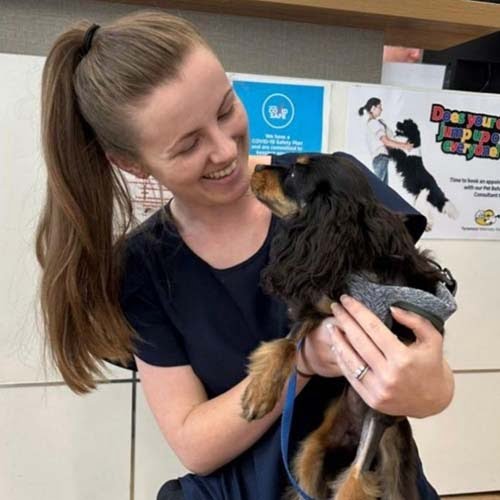
Customer Care Team member Ash, giving Ash a cuddle! What a gorgeous pair of Ashes!
Ash, the Cavalier King Charles Spaniel puppy, is only 6-month-old but has she has already gone through two major exploratory laparotomy surgeries in her young life. This surgical procedure involves making an incision in the midline of the abdomen of the pet and exploring inside for the cause of the problem.
Ash was vomiting profusely due to consuming a piece of her owner’s clothing, causing a gastrointestinal obstruction. She then became emaciated after she stopped eating properly. In addition to the obstruction caused by the clothing in her intestine, Ash developed a serious complication known as an intussusception, which is where one part of the intestine moves inside another part, like a telescope.
Her first surgical procedure involved removing the foreign material and the second surgery involved correcting the intussusception, which persisted despite removing the foreign material. Luckily for Ash, it was a complete success! She has visited us for multiple rechecks to check her progress, and we are pleased to report that Ash is on the mend!
Is giving your dog oral medication a struggle? Let’s make it easier.
Author: Katie Bedrossian – Pet Behaviour Consultant
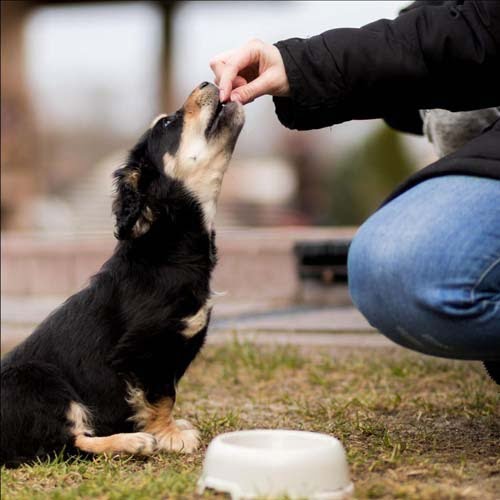
When it comes to giving oral medication to your dog, is it easy or difficult? Are they a hide and flick it out type? The clamp the jaw shut type? Or the wriggly worm type? Whatever your dog’s avoidance technique might be, there are some ways to ensure it is a one and done deal without any of the struggle.
First, check if the medication is a flavoured medication (e.g. beef or pork) or a palatable chew. If so, we can give it as a treat. But what if your dog’s nose knows better and he or she won’t take it as a treat? See below for some tips on delivery to improve success of consumption.
Second, check if it is meant to be given with or without food. This can affect your dog’s gastrointestinal tolerance to the medication as well as the absorption (some need food with the medication to aid this, others need an empty stomach for the same thing to occur).
If the medication is to be given with a full meal, it is best to give the medication first, and then follow with the meal, as this way you ensure the whole medication gets consumed and your dog doesn’t simply eat around it.
How to give a flavoured tablet or chew like a treat!
Step 1
First, ensure no other dogs are around and you can access the floor near your dog. Instead of handing the medication directly from your hand to their mouth, as soon as your dog has a curious interest in the medication, wave your hand back and forth (enough movement for your dog to see it as a game, but not too fast that your dog loses interest), then toss it on the ground. Many dogs will eat it, as it is now a game of chase and not just about the medication. You can improve the chances by doing this at a time you normally do training with treats, such as exercise, treat, exercise, treat, medication game, exercise, treat. So, give them a real treat the first couple of times, then cunningly replace the treat with the medication, then return to the real treat.
If step one is unsuccessful, move to Step 2 below.
Step 2
Take 3 small portions of a high value soft or moist food (a 2cm cube of moist or semi-moist food or a teaspoon of soft food). Prepare the 3 small portions on a tray or mat. Only put the medication in 1 of them, so 2 are just treat foods and 1 has the medication hidden inside the treat food. Ideally, have one person place their hands on your dog’s chest and hold your dog back while the other person puts the food down. Not a sit and wait, but someone restraining them (as gentle pressure on their chest away from the food increases value in the food when released). Now release your dog. This works much better than medication hidden in a single treat given by hand. To improve your chances of this working, do this initially as a game where there is no medication in any of the food portions.
Find out how to give bitter-tasting tablets to your dog!
What is the safest parasite control for my dog?
Author: Dr Gretta Howard – Senior Veterinarian
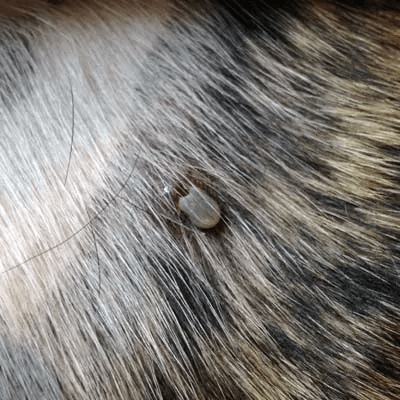
Parasites can be deadly in dogs and some of them can even cross over into humans. For these important reasons, it is much safer to prevent them from affecting your dog than treating the diseases they cause.
Our recommended dog parasite control protocol is as follows:
| Product name | Frequency | Prevents |
| Proheart injection | Annually | Heartworm |
| Bravecto oral chew | Quarterly | Ticks and fleas |
| Seresto tick collar | 4-monthly | Ticks and fleas |
| Milbemycin* tablet or Drontal oral chew | Quarterly | Intestinal worms |
* Either Milpro/Milbemax brands are recommended
For extra tick prevention, we also advise your dog wears a Seresto collar and a new one is applied every 4 months.
When these products are purchased from Turramurra Veterinary Hospital, a reminder via text message is sent when your dog is next due.
If you have difficulty administering these products to your dog, our nurses are highly skilled in medication administration to even the most stubborn jaw clampers and tablet resisters out there.
You are welcome to book your dog in for a complimentary nurse consultation if you purchase your dog’s parasite control at Turramurra Veterinary Hospital (provided your dog is friendly).
Which parasites can affect my dog?
Dog parasites can either be internal (endoparasites) or external (ectoparasites).
Internal parasites
The most common internal parasites are worms that live inside your dog either in the gastrointestinal tract (stomach and intestines) or cardiovascular system (blood, heart and large vessels).
Intestinal worms
There are five different intestinal worms seen in dogs that need to be eliminated through regular parasite control:
- Roundworm (Toxocara canis)
- Whipworm (Trichuris vulpis)
- Hookworm (Ancylostoma caninum)
- Flea tapeworm (Dipylidium caninum)
- Hydatid tapeworm (Echinococcus granulosus)
Find out more about the safest way to eliminate parasites from your dog.
Staff Profile: Senior Nurse Lou
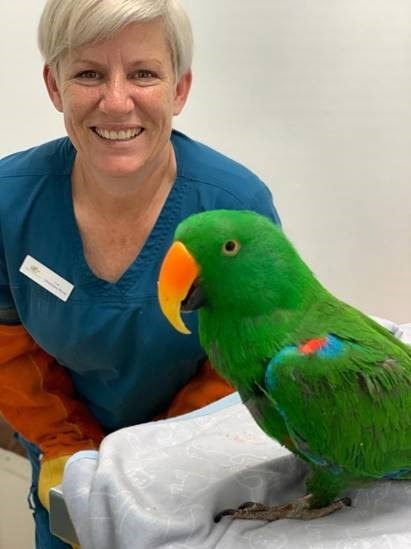
1. What made you want to pursue a career in the animal industry? Was there any defining experiences or relationships that influenced you?
I have always been drawn to animals, ever since I was a little kid. I used to bring home wildlife and strays and grew up with lots of animals in my home. I can’t remember a time without them.
I did work experience in a local clinic when I was in high school, and I loved it (I only went home with one stray cat!). However, life took me on a different path. It always remained in the back of my mind that vet nursing would be fulfilling, and that I could finally do something I was really passionate about. Many years later I decided to put myself through TAFE and obtained both my Certificate II in Animal Studies and IV in Veterinary Nursing. I have now been working in the industry for 6 years, and at Turramurra Veterinary Hospital for 4 of those. Six months ago, I became a registered veterinary nurse. I have never looked back!
2. As a senior nurse you have probably seen some very interesting cases! Are there any that have stood out to your over the years?
The case that always springs to mind is a cat that came through the emergency department at another clinic I was working at, that was brought in by police. He was not doing well on arrival and required CPR. He was revived, and once stable, the owners tracked down. It turned out they had been looking for him all night, as he had fallen from a 36 floor high rise apartment! Despite this he didn’t have a single broken bone, overcame is internal injuries, and returned home safe and sound 5 days later.
But honestly, the cases I find the most rewarding are the patients that come in very unwell, and little by little, day by day, we nurse them back to health. Seeing happy, healthy pets returned to it’s relieved and grateful family always stays with me.
3. Tell us a little bit about your own pets!
I have Busta, or his Lordship as I call him! A very handsome 13 year old Russian Blue cat, for whom I am his human servant. He is a lovely natured, chill, and independent cat, except for when he is hungry!
Indy, my 7-year-old mega mix rescue dog, who is 40kgs+ of pure joy! It has been the most rewarding journey watching this nervous, shy, and abused country dog blossom into a confident, happy, and quirky bundle of love! My only complaint is she thinks she is a lap dog! She brings me so much joy, I honestly cannot remember what life was like before her.
And Rocky, my 10-year-old quarter horse. I have owned horses all my life, but none with as much personality as this one. I refer to him as my 500kg Labrador puppy. He is so much fun (when he isn’t the bane of my existence). We have had so many adventures together over the years, and I ride as often as I can.
Spending time with all my pets is my happy place!
Feline Friends: Indoor Enrichment – 6 Simple Steps to a Happy Cat!
Author: Freya Britt-Lewis – Customer Care & Pet Health Writer
With the right environmental enrichment cats can live happy, fulfilling lives completely indoors. With indoor cats becoming more popular, the rise in complex enrichment activities to stimulate them has also grown, as well as education on how to keep your feline family friend happy.
In this article we’ll point out just a few key points to keeping your cat content in the home!
1. Litter boxes
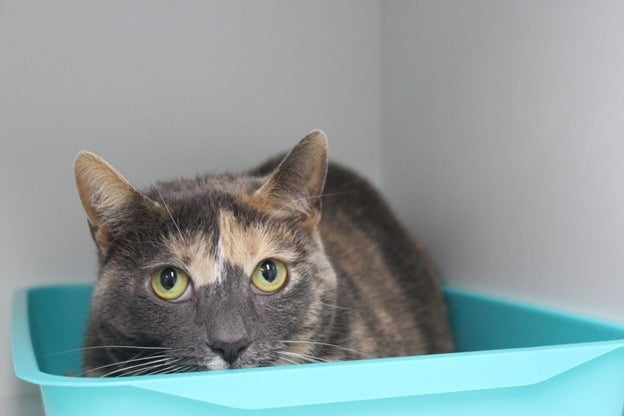
Litter trays are a key aspect of keeping your cat happy. Cats are extremely fussy, especially when it comes to their toilet! Read over this helpful article written by Dr Gretta Howard on ways to make your cat love their litter box!
2. Resting spots
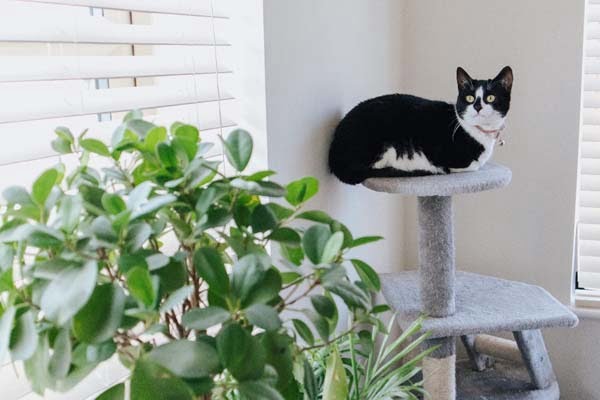
Provide height. Cats are climbers and will appreciate having access to high places. Investing in a cat tower or two, allowing access to windowsills, nooks, or crannies where they can perch and watch the world go by will make for a very happy cat!
Cats love sunlight, and you will often notice them seeking out warmth when resting or lazing around. Allow access to natural warmth throughout the day by setting up a cat bed or tower by the window.
3. Entertainment
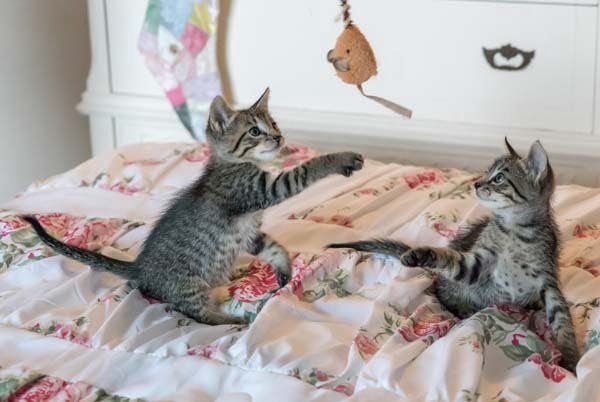
Toys! Like dogs, some cats will not be fussed with playing with a toy, no matter how hard you try. But if your cat loves toys, prove a variety of them throughout the day. Spending time daily playing with your cat will provide physical exercise and mental stimulation, as well as strengthening your bond together.
Click through for the last 3 tips on indoor enrichment for your cat!
Innovations: Tick Anti-Serum – What is it and how does it work?
Author: Anna – Senior Vet Nurse
What is tick anti-serum?
Living on Sydney’s North Shore, paralysis tick toxicity presents a very real and present danger for our pets! While prevention is always much, much better than a ‘cure’, if your pet does become affected by tick toxicity, it is very likely that the administration of tick anti-serum (also known as TAS) will form part of your pet’s treatment plan.
Paralysis tick toxicity occurs when a tick attaches to your pet and then begins to feed. During feeding, a neurotoxin is produced in the tick’s saliva, which is then transferred to the pet. This neurotoxin spreads through the blood circulatory system until it eventually becomes ‘bound’ to the nerves (neuroreceptors) of the pet’s nervous system, causing a progressive paralysis.
How does tick anti-serum work?
Tick anti-serum works by neutralising the free circulating or ‘unbound’ neurotoxin that has not yet ‘bound’ itself to the nervous system. It is important to note however that while tick anti-serum prevents unbound neurotoxin from binding to the pet’s neuroreceptors, it is not an anti-dote, so has no effect on the neurotoxin that has already bound to the nerves. Bound tick neurotoxin must wear off and be metabolised naturally. The sooner that tick anti-serum is administered to a pet with tick toxicity, the more effective it will be, because less neurotoxin will be able to bind to the nerves. There is usually a lag of approximately 24 hours where the pet will often get worse before they get better. Unfortunately, sometimes complications develop such as pneumonia or respiratory failure, in spite of TAS administration.
What is tick anti-serum made of?
You might be surprised to learn that tick anti-serum is actually made from blood! More specifically, it is made from the blood of donor dogs who have been hyperimmunised against the paralysis tick neurotoxin. As a result, the blood is full of antibodies that have been formed specifically to neutralise the paralysis tick neurotoxin. The antibody rich blood is then highly purified to make it suitable for infusion in other animals as treatment for tick toxicity.
Could my pet have a reaction to tick anti-serum?
It comes as no surprise then that when your veterinarian administers TAS to your pet, they take into account many of the same medical principles that are found in blood transfusion medicine. Just like a blood transfusion, administering TAS involves introducing foreign proteins from a donor to a patient. In rare circumstances, a pet’s immune system will react to these foreign proteins resulting in a severe allergic reaction. Also like a blood transfusion, the more times a pet has had tick anti-serum, the greater the risk that they could have a reaction. Luckily your vet knows this and will undertake precautions to ensure the risk of reaction is as low as possible. This is why it is always important to tell your vet if your pet has ever had TAS in the past.
As useful as tick anti-serum is, the very best treatment is for your pet to never need it in the first place. All-year-round protection using a trusted tick preventative product, such as Bravecto or Simparica, should always be your first line of defence against the risk of paralysis tick toxicity.
We hope you have enjoyed our e-news and we wish you all the best for a great start to 2023! We are always keen to receive feedback from our clients, so feel free to send a message to our Practice Manager, Kelly Lawrence by emailing manager@turramurravet.com.au as we always strive to improve our service.
Thank you! Best wishes, from your local, family-owned and independent Turramurra Veterinary Hospital team.
Thank you! Best wishes, your locally family-owned and independent Turramurra Veterinary Hospital team.

